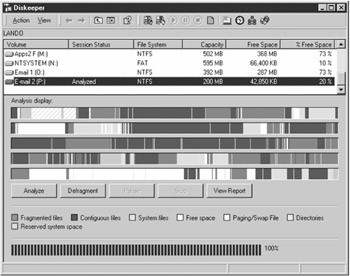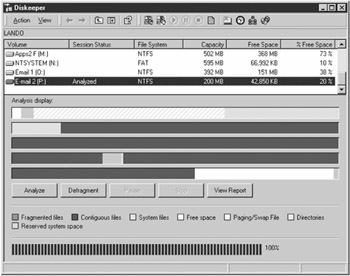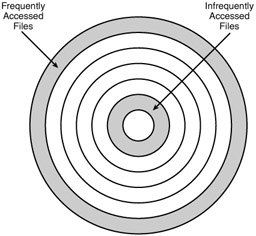Enter Optimization
|
| < Day Day Up > |
|
Optimization first reared its head in the 1980s during the heyday of the OpenVMS system. Since then, it has drifted in and out of fashion, often piggy-backed with defragmentation software. The basic idea is that an optimizer is supposed to heighten defragmentation gains by taking the process a step further. In the normal course of running a system, files are split into hundreds or even thousands of pieces throughout the disk (Exhibit 1). When a defragmentation program is run, these fragments are consolidated into contiguous blocks, significantly reducing the time it takes to read and write (Exhibit 2). As you can see in Exhibit 2, though, system files and free space are not completely consolidated during defragmentation. This is where optimization comes in.
Exhibit 1: Before Defragmentation

Exhibit 2: After Defragmentation

A disk optimizer attempts to go a step beyond defragmentation by grouping files according to how often they are accessed and modified. Although the optimization model varies from vendor to vendor, a typical model places system files, Internet browsers, and directories on the outer edge of the disk, followed by the often-used files, then little-used files, and finally free space. Frequently accessed files are usually placed at the beginning of the disk on the outermost tracks. Infrequently accessed files, on the other hand, are relegated to the end of the disk to free up space on the faster outside tracks (Exhibit 3). The Master File Table (MFT), for example, is often given top priority by optimization programs. This is an index file for Windows NT and Windows 2000 that is opened every time a file is accessed. Similarly, an Internet browser would be placed near the beginning of the disk.
Exhibit 3: Optimization

|
| < Day Day Up > |
|
EAN: N/A
Pages: 197